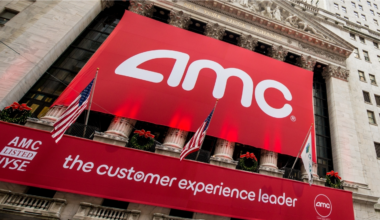The importance of social and sustainability criteria for public companies has been steadily increasing as investors become focused on non-financial performance in their investment decision-making. For investors like Blackrock, environmental, social, and governance (ESG) initiatives are seen as critical contributors to a company’s future financial performance and their incorporation into portfolios. And with 72% of investors surveyed by EY sharing that they conduct a structured, methodical evaluation of a company’s ESG criteria, IROs have been looking to better elevate and communicate their investments into sustainability.
Simultaneously, investors have been taxed by the vast amounts of data they are required to collect, curate, and assess as a part of their investment process. With the abundance of ESG-related data and information that can be shared, many clients have spoken to us about the confusion of what should be shared, and how.
This has driven our team to build structured and standardized products from Q4 to help our clients communicate their ESG story. With the launch of our suite of ESG communication products, from webpages to virtual events, I sat down (virtually) with our product and development team to learn how they approached the development of our newest ESG website products and how they look to continue to enhance and evolve our offering.
An Increase in ESG-Related Requests
According to a survey by Brunswick Group, the investor relations website is cited as the most trusted resource for information for investors, making it a prime location to showcase your company’s ESG story. Marnie McCall (Manager of Client Activations) has been involved in countless requests from clients to develop digital destinations for their ESG messages.
“Increasingly, I was seeing clients coming to Q4 asking our design teams for guidance for presenting ESG on their websites. It was clear that companies were discussing sustainability around various groups but there was a struggle on how to get started moving that message to a website,” comments Marnie.
The Q4 team began collaborating closely with these clients, but it was soon clear to Jeyson Lopez (Manager of Digital Design) that “clients were struggling on how to tell that story. They didn’t know what to include, what content should be promoted, and how to leverage design to elevate that story.”
The lack of established best practices for many clients was a significant challenge as there was continuous iteration on what to present and how. Across hundreds of ESG pages custom developed for clients, Marnie and Jeyson saw patterns both in design as well as in the key areas of disclosure emphasized by clients. These sites for leading brands such as Etsy and Yelp began to highlight the impact clients could create with the right digital destination – particularly by making it easier for investors to consume those key initiatives.
Identifying Common Elements in Communicating ESG
Simone Pereira (Senior Product Manager) had begun researching ESG and the ways in which public companies, as a whole, had been approaching sustainability on digital platforms and turning what are deeply researched initiatives and significant quantitative assessments of non-financial strategies into visual narratives. Simone comments that throughout her research, “clients across North America were continually asking me what have we [Q4] learned speaking to others and what are the best practices that we are seeing.” There was an appetite for understanding how to more effectively bring ESG to a website.
Simone, working alongside Samantha Howes (Senior Product Designer), began reviewing various websites assessing how information was presented, what content was emphasized, and what content types were being used. “Through our reviews, we began to assess the information architecture to see how content could be presented from text to PDF, to imagery carousels, to multimedia,” says Samantha.
Segmenting the universe of public companies, certain industries emphasized different things. One sector might place focus on one tenet of ESG like social, for example, while other industries might have to really take investors on a journey to speak to their increasing investment into environmental initiatives.
While it was clear that there was a huge variance in the way companies were both thinking about and communicating their strategies, the team recognized that a “unifying and structured experience for investors would help [investors] to better find information that they need,” says Simone Pereira. “If I, as an investor can come to a page, and know where to look for that content it can help in consuming that story and make the right investment decision.”
A consistent approach to how ESG information is presented on a website could significantly help companies that were bringing their story to a broader audience by ensuring that they were disclosing the right data, while also making it easy for investors to find the information critical to their assessment.
Creating Structured, Consistent, and Impactful ESG Websites
While there are no industry standards yet for effectively communicating ESG, our team leveraged their expertise in IR website best practices to lead the development of two separate templates for ESG at Q4. Clients have the option of using a one-page template that can be easily incorporated into an existing investor or corporate websites or a four-page stand-alone template designed to accommodate a breadth of ESG information.
The templates, as well as mock designs created using the templates, were reviewed by experienced investor relations officers and professionals for their input and guidance, who confirmed the designs were aligned with industry expectations as well as the findings collected by Simone and Samantha. The end outcome is a significant improvement to how our clients can communicate their compelling investment opportunity and an evolved sustainability approach in a structured, easy-to-assess format.
Investors Informed. Stakeholders Engaged.
Empowering public companies to effectively tell their ESG story enables better communication with institutional investors, which can be transformational to their strategy.
Larry Fink of Blackrock has emphasized the importance of this engagement as he calls out that “from January through November 2020, investors in mutual funds and ETFs invested $288 billion globally in sustainable assets, a 96% increase over the whole of 2019.” His clear position is that “this is the beginning of a long but rapidly accelerating transition, one that will unfold over many years and reshape asset prices of every type.”
It is a huge strategic shift for public companies to have an effective way to explain how they are making investments to not only drive sustainability, but also sustainable long-term growth. Interestingly, however, though clients are drafting their ESG statements for institutional investors, it is simultaneously improving how companies are engaging with retail investors, partners, and employees.
A broad audience of stakeholders (and shareholders) are able to easily access information critical to build and reinforce their key cultural drivers. The public disclosure of ESG messages on Q4 websites is truly helping our clients to scale the impact of their message. Learn more by visiting our website.


